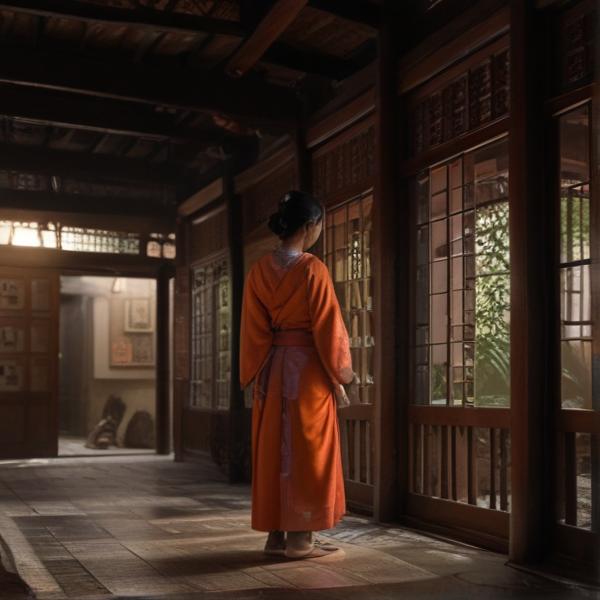基本信息 (Basic Information)
含义与用法 (Meanings & Usage)
中文核心释义 (Core Chinese Meaning): 才智出众或外貌英俊,指美好、卓越的人。
英文核心释义 (Core English Meaning): handsome; talented; outstanding in wit or appearance
象形意义 / 为何这么写 (Pictographic Meaning / Writing Rationale)
文言文释义 (Classical Chinese Meaning)
文言文含义与现代相近,主要指才智卓越或外貌英俊之人。Similar to modern meaning—mainly refers to someone with remarkable talent or handsome appearance.
深入学习 (In-depth Study)
字源故事 (Origin Story)
字形演变 (Character Evolution)
常用词语和例句 (Common Words & Examples)
俊男 (handsome man)
他是大家公认的俊男。
Eng: He is recognized by everyone as a handsome man.
俊才 (talented person)
这位青年是一位不可多得的俊才。
Eng: This young man is a rare talent.
相关成语 (Related Idioms)
俊逸出群
Meaning: exceptionally talented and stands out from the group
多语言翻译 (核心释义) (Translations (Core Meaning))
- French: beau; talentueux
- German: gutaussehend; talentiert
- Spanish: guapo; talentoso
- Italian: bello; dotato
- Portuguese: bonito; talentoso
- Russian: красивый; талантливый
- Arabic: وسيم؛ موهوب
- Persian: خوشقیافه؛ با استعداد
- Dutch: knap; getalenteerd
- Polish: przystojny; utalentowany
- Vietnamese: đẹp trai; tài năng
- Ukrainian: гарний; талановитий
视频学习资源 (Video Learning Resources)
通过以下链接在热门视频网站搜索 "俊" 的更多讲解:
Search for more explanations of "俊" on popular video sites:
- 在 Bilibili.com 搜索 "俊 字源 说文解字" (Search on Bilibili)
- 在 YouTube.com 搜索 "俊 character origin etymology" (Search on YouTube)
网络参考 (Web References for "俊") ()
网络内容摘要 (Web Content Summary):
俊的核心含义主要指“杰出、优秀”,也常指外貌“俊美、英俊”。Core meaning: "俊" mainly means "outstanding, excellent", and is also used to describe someone's appearance as "handsome" or "good-looking".
-
象形起源: “俊”字由“人”(单人旁,代表人)和“夋”(表示幼儿蹒跚学步、天真可爱)组成,本义指健康漂亮、单纯可爱。 Pictographic origin: "俊" is formed from the "person" radical and "夋", which suggests a toddling child, signifying healthy, pretty, and innocent.
-
常用词语: 如“俊俏”(handsome, pretty)、“俊美”(handsome, beautiful)。 Common collocations: For example, "俊俏" (handsome, pretty), "俊美" (handsome, beautiful).
-
文化背景: 早在古代文献中,"俊"就用来形容才智或品德出众之人,例如《书经·洪范》中的“俊民”,指杰出之人。 Cultural background: In ancient texts, "俊" described people who were outstanding in talent or virtue, such as "俊民" in the Book of Documents.
-
易混淆点: "俊"经常用作形容外貌,也用于表达才智超群,需要结合上下文判断含义。 Possible confusion: "俊" can refer to both appearance and talent, so context is important for proper interpretation.
俊的解释|俊的意思|汉典"俊"字的基本解释 - 漢典
形. 傑出的。 《書經·洪範》:「俊民用章,家用平康。」 《文選·曹植·七啟》:「若夫田文、無忌之儔,乃上古之俊公子也。 」. 容貌秀美。 如:「俊俏」。 元·喬吉《揚州夢·第三折》:「端詳著厖兒俊,思量著口兒甜,怎肯教意兒差。」 《紅樓夢·第六九回》:「老祖宗且別問,只說比我俊 ...
汉字"俊"的起源、演变过程-汉字字源辞典
夋 ,既是声旁也是形旁,表示幼儿蹒跚学步,天真可爱。 俊 ,篆文 (人,成人) (夋,幼儿学步,天真可爱),表示健康漂亮,单纯可爱。 造字本义:形容词,健康漂亮,单纯可爱 。 隶化后楷书 将篆文字形中的"人" 写成"单人旁" ,将篆文字形中的"夋" 写成 。
更多图片 (俊 More Images) ()
